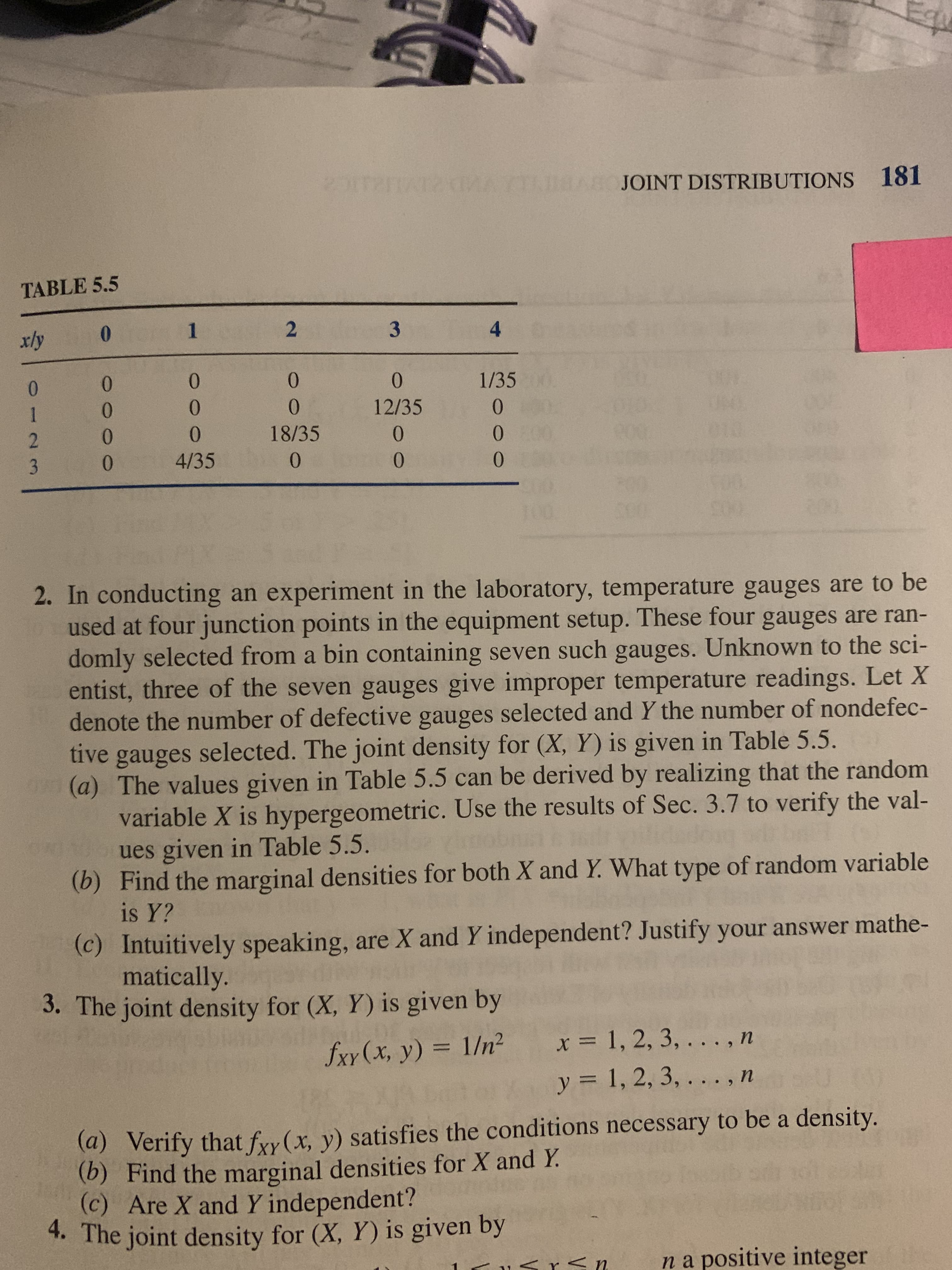JOINT DISTRIBUTIONS 181 TABLE 5.5 xly 3 4 0. 0. 0. 1/35 1 12/35 0. 0. 18/35 010 4/35 0. 2. In conducting an experiment in the laboratory, temperature gauges are to be used at four junction points in the equipment setup. These four gauges are ran- domly selected from a bin containing seven such gauges. Unknown to the sci- entist, three of the seven gauges give improper temperature readings. Let X denote the number of defective gauges selected and Y the number of nondefec- tive gauges selected. The joint density for (X, Y) is given in Table 5.5. o (a) The values given in Table 5.5 can be derived by realizing that the random variable X is hypergeometric. Use the results of Sec. 3.7 to verify the val- ues given in Table 5.5. (b) Find the marginal densities for both X and Y. What type of random variable is Y? (c) Intuitively speaking, are X and Y independent? Justify your answer mathe- matically. 3. The joint density for (X, Y) is given by fxy (x, y) = 1/n² x = 1, 2, 3, . . .,n y = 1, 2, 3, . .., n (a) Verify that fyy (x, y) satisfies the conditions necessary to be a density. (b) Find the marginal densities for X and Y. (c) Are X and Y independent? . The joint density for (X, Y) is given by
Percentage
A percentage is a number indicated as a fraction of 100. It is a dimensionless number often expressed using the symbol %.
Algebraic Expressions
In mathematics, an algebraic expression consists of constant(s), variable(s), and mathematical operators. It is made up of terms.
Numbers
Numbers are some measures used for counting. They can be compared one with another to know its position in the number line and determine which one is greater or lesser than the other.
Subtraction
Before we begin to understand the subtraction of algebraic expressions, we need to list out a few things that form the basis of algebra.
Addition
Before we begin to understand the addition of algebraic expressions, we need to list out a few things that form the basis of algebra.
#2 part b and c

Trending now
This is a popular solution!
Step by step
Solved in 2 steps with 6 images


